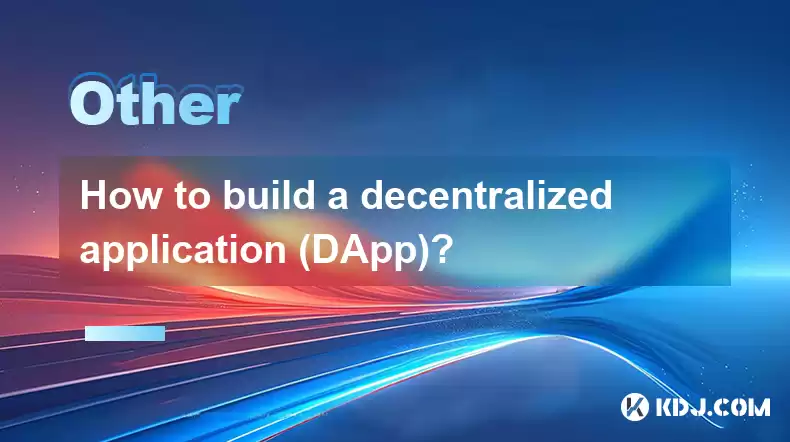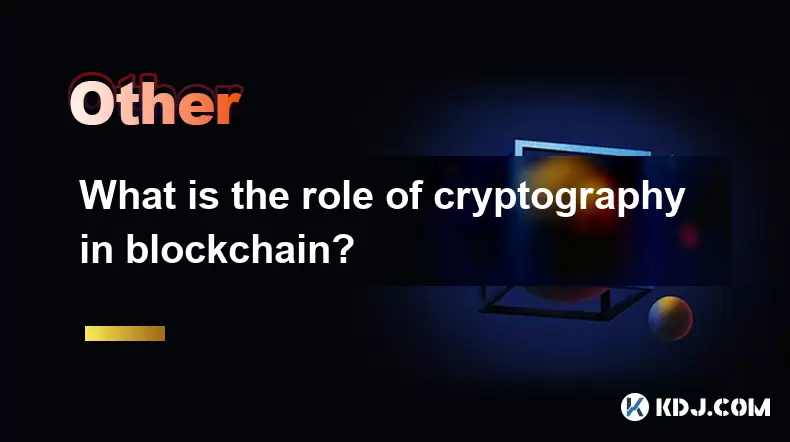-
 Bitcoin
Bitcoin $113900
0.47% -
 Ethereum
Ethereum $3491
-0.42% -
 XRP
XRP $2.876
-1.87% -
 Tether USDt
Tether USDt $1.000
0.03% -
 BNB
BNB $750.4
-0.49% -
 Solana
Solana $161.3
-1.76% -
 USDC
USDC $0.9999
0.01% -
 TRON
TRON $0.3242
-0.91% -
 Dogecoin
Dogecoin $0.1985
-0.19% -
 Cardano
Cardano $0.7241
1.49% -
 Hyperliquid
Hyperliquid $38.05
0.56% -
 Stellar
Stellar $0.3896
2.92% -
 Sui
Sui $3.442
0.61% -
 Chainlink
Chainlink $16.18
0.92% -
 Bitcoin Cash
Bitcoin Cash $541.0
0.51% -
 Hedera
Hedera $0.2427
2.67% -
 Ethena USDe
Ethena USDe $1.001
0.03% -
 Avalanche
Avalanche $21.39
-0.68% -
 Toncoin
Toncoin $3.669
2.25% -
 Litecoin
Litecoin $109.5
0.95% -
 UNUS SED LEO
UNUS SED LEO $8.966
0.11% -
 Shiba Inu
Shiba Inu $0.00001218
0.77% -
 Polkadot
Polkadot $3.598
1.23% -
 Uniswap
Uniswap $9.164
1.14% -
 Monero
Monero $297.7
1.21% -
 Dai
Dai $1.000
0.00% -
 Bitget Token
Bitget Token $4.328
0.84% -
 Pepe
Pepe $0.00001047
1.05% -
 Cronos
Cronos $0.1329
0.70% -
 Aave
Aave $257.6
1.03%
How to build a decentralized application (DApp)?
Building a DApp involves choosing a blockchain, designing secure smart contracts, developing a user-friendly frontend, and ensuring thorough testing and deployment on a testnet before going live.
Apr 14, 2025 at 01:01 am

Building a decentralized application (DApp) involves several key steps and considerations that are crucial for ensuring the application's functionality, security, and decentralization. This guide will walk you through the process of creating a DApp, from conceptualization to deployment.
Understanding the Basics of DApps
Before diving into the development process, it's important to understand what a DApp is. A DApp, or decentralized application, operates on a blockchain or peer-to-peer network of computers. Unlike traditional applications, DApps do not rely on a central server, which makes them resistant to censorship and single points of failure. They typically use smart contracts to automate processes and ensure that the application's logic is executed as intended.
Choosing the Right Blockchain Platform
The first step in building a DApp is selecting the appropriate blockchain platform. Popular choices include Ethereum, Binance Smart Chain, and Polkadot. Each platform has its own strengths and weaknesses, such as Ethereum's robust smart contract capabilities, Binance Smart Chain's lower transaction fees, and Polkadot's interoperability features. Consider your DApp's specific needs, such as scalability, cost, and the programming languages supported by the platform.
Designing the Smart Contracts
Smart contracts are the backbone of any DApp. They are self-executing contracts with the terms of the agreement directly written into code. To design smart contracts, you'll need to define the rules and logic that govern your DApp's operations. For example, if you're building a decentralized marketplace, your smart contracts might handle listing items, processing payments, and managing disputes.
- Choose a smart contract language: Depending on your chosen blockchain, you might use Solidity for Ethereum, Rust for Polkadot, or Vyper for Ethereum as well.
- Write and test the smart contracts: Use tools like Truffle or Hardhat for Ethereum to write, test, and deploy your smart contracts. Ensure that your contracts are secure and free from vulnerabilities.
- Audit the smart contracts: Before deploying, it's crucial to have your smart contracts audited by a professional service to identify and fix any potential security issues.
Developing the Frontend
The frontend of your DApp is what users interact with. It needs to be user-friendly and capable of communicating with the blockchain. You can use frameworks like React, Vue.js, or Angular to build the frontend. To connect the frontend to the blockchain, you'll need to integrate a Web3 library such as Web3.js or Ethers.js.
- Set up the development environment: Install Node.js and the necessary dependencies for your chosen frontend framework.
- Create the user interface: Design the UI to be intuitive and responsive. Ensure that it can handle blockchain interactions smoothly.
- Integrate with the blockchain: Use a Web3 library to connect your frontend to the blockchain. This involves setting up a provider, such as MetaMask, to enable users to interact with your DApp.
Testing and Deployment
Before deploying your DApp, thorough testing is essential to ensure that it functions as expected. Test your DApp on a testnet before moving to the mainnet. This allows you to identify and fix any issues without incurring real costs.
- Test the smart contracts: Use testnets like Ropsten or Rinkeby for Ethereum to test your smart contracts in a simulated environment.
- Test the frontend: Ensure that the user interface works seamlessly with the blockchain and that all functionalities are working as intended.
- Deploy to the mainnet: Once you're satisfied with the testing results, deploy your DApp to the mainnet. This involves deploying your smart contracts and hosting your frontend on a decentralized storage solution like IPFS.
Ensuring Security and Decentralization
Security and decentralization are paramount for any DApp. Implement best practices to protect your DApp from attacks and ensure its decentralized nature.
- Use secure coding practices: Follow guidelines for writing secure smart contracts and frontend code.
- Implement decentralized storage: Use solutions like IPFS to host your frontend, ensuring that it remains decentralized.
- Regularly update and maintain: Keep your DApp up to date with the latest security patches and improvements to maintain its integrity.
FAQs
Q: Can I build a DApp without coding experience?
A: While it's possible to use no-code platforms to build simple DApps, having coding experience significantly enhances your ability to create more complex and secure applications. Learning the basics of smart contract languages and frontend development can be beneficial.
Q: How do I handle user data in a DApp?
A: In a DApp, user data should be handled with care to maintain privacy and security. Use decentralized storage solutions and ensure that sensitive data is encrypted. Always inform users about how their data is being used and stored.
Q: What are the common challenges in building a DApp?
A: Common challenges include ensuring scalability, managing high gas fees, and maintaining security. Scalability can be addressed by choosing the right blockchain platform, while gas fees can be mitigated by optimizing smart contract efficiency. Security requires constant vigilance and regular audits.
Q: How can I monetize my DApp?
A: There are several ways to monetize a DApp, such as charging transaction fees, offering premium features, or integrating advertising. You can also create and sell your own cryptocurrency or tokens within the DApp ecosystem.
Disclaimer:info@kdj.com
The information provided is not trading advice. kdj.com does not assume any responsibility for any investments made based on the information provided in this article. Cryptocurrencies are highly volatile and it is highly recommended that you invest with caution after thorough research!
If you believe that the content used on this website infringes your copyright, please contact us immediately (info@kdj.com) and we will delete it promptly.
- Altcoins Most Searched: Hedera (HBAR) and the ETF Hype
- 2025-08-03 20:50:16
- Arbitrage Adventures: Creditcoin, Kaspa, and Chasing Crypto Profits
- 2025-08-03 20:30:16
- Claude HIVE & Code Agents: Faster Coding Revolution?
- 2025-08-03 20:50:16
- Trump Media, Bitcoin, and Crypto: A Surprising Alliance in the Making?
- 2025-08-03 21:30:16
- Shiba Inu's Bullish Reversal Hopes Amid Market Uncertainty: A Deep Dive
- 2025-08-03 21:30:16
- Shiba Inu's Struggle, Mutuum Finance's Rise, and Key Support Levels: A Crypto Deep Dive
- 2025-08-03 20:55:16
Related knowledge

What is the difference between on-chain and off-chain transactions?
Aug 02,2025 at 04:22pm
Understanding On-Chain TransactionsOn-chain transactions refer to digital asset transfers that are recorded directly on a blockchain ledger. These tra...

What is a node's role in a blockchain network?
Aug 03,2025 at 03:16pm
Understanding the Function of a Node in a Blockchain NetworkA node is a fundamental component of any blockchain network, acting as a participant that ...

What is the double-spending problem and how does blockchain prevent it?
Aug 02,2025 at 01:07pm
Understanding the Double-Spending ProblemThe double-spending problem is a fundamental challenge in digital currency systems where the same digital tok...

What is the difference between a blockchain and a database?
Aug 01,2025 at 09:36pm
Understanding the Core Structure of a BlockchainA blockchain is a decentralized digital ledger that records data in a series of immutable blocks linke...

How does blockchain handle scalability?
Aug 02,2025 at 02:58pm
Understanding Blockchain Scalability ChallengesBlockchain scalability refers to a network's ability to handle an increasing volume of transactions wit...

What is the role of cryptography in blockchain?
Aug 03,2025 at 03:42pm
Understanding the Foundation of Blockchain SecurityCryptography is the cornerstone of blockchain technology, providing the essential tools to ensure d...

What is the difference between on-chain and off-chain transactions?
Aug 02,2025 at 04:22pm
Understanding On-Chain TransactionsOn-chain transactions refer to digital asset transfers that are recorded directly on a blockchain ledger. These tra...

What is a node's role in a blockchain network?
Aug 03,2025 at 03:16pm
Understanding the Function of a Node in a Blockchain NetworkA node is a fundamental component of any blockchain network, acting as a participant that ...

What is the double-spending problem and how does blockchain prevent it?
Aug 02,2025 at 01:07pm
Understanding the Double-Spending ProblemThe double-spending problem is a fundamental challenge in digital currency systems where the same digital tok...

What is the difference between a blockchain and a database?
Aug 01,2025 at 09:36pm
Understanding the Core Structure of a BlockchainA blockchain is a decentralized digital ledger that records data in a series of immutable blocks linke...

How does blockchain handle scalability?
Aug 02,2025 at 02:58pm
Understanding Blockchain Scalability ChallengesBlockchain scalability refers to a network's ability to handle an increasing volume of transactions wit...

What is the role of cryptography in blockchain?
Aug 03,2025 at 03:42pm
Understanding the Foundation of Blockchain SecurityCryptography is the cornerstone of blockchain technology, providing the essential tools to ensure d...
See all articles

























































































